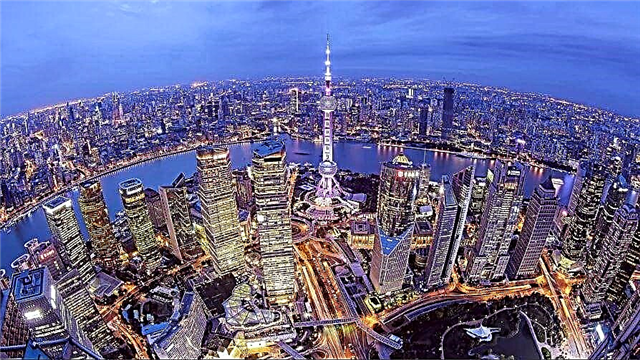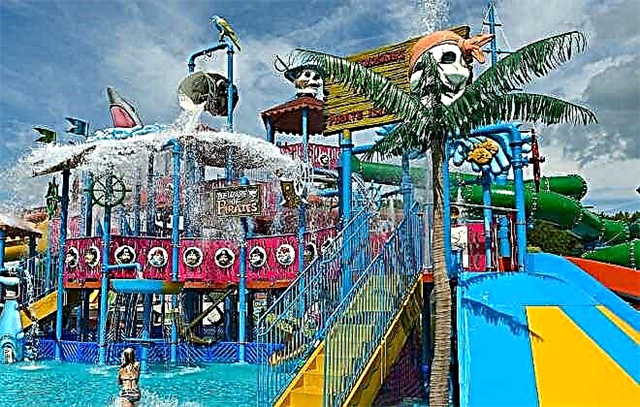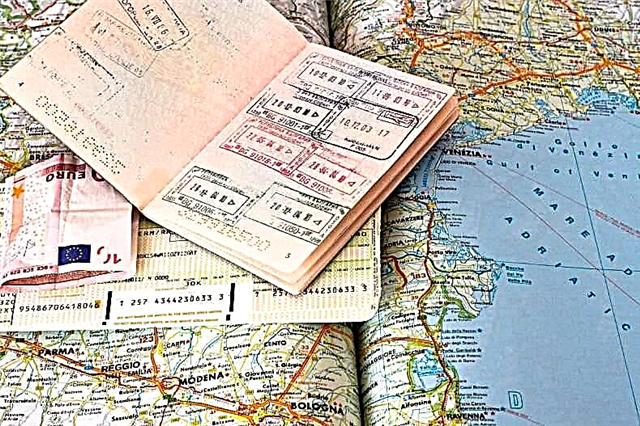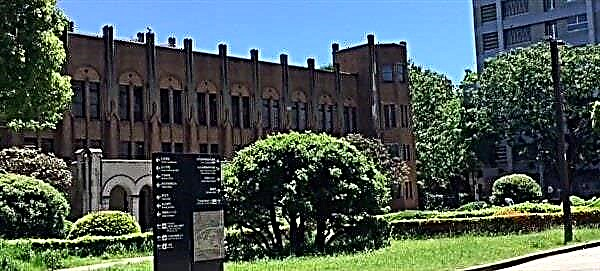Universities in Japan are a concentration of advanced laboratories, in which more than one innovation in the field of medicine and technology has seen the light. Today, this state is considered the legislator of new trends in science and the forge of professional personnel in the field of IT, engineering and technology. At the end of the last century, it was almost impossible to get to study at a Japanese university. It was only through a government program to internationalize universities that talented youth from other countries gained access to one of the most efficient higher education systems in the world.
How the Japanese education system works
For a long time, the Japanese educational system was closed, which allowed it to form its own model and achieve high efficiency in teaching the younger generation. At the end of the 19th century, integration with Western models began, as a result of which the learning process acquired the following look:
- Preschool education.
- Primary School.
- Secondary education, which includes 2 stages - incomplete and complete secondary school.
- Higher education.
Before a child sits down at a school desk, he or she will have to socialize in a childcare center or kindergarten. And although this stage is not mandatory, many parents still prefer to give their baby to experienced teachers.
Preschool institutions are of a public and private type. Both adhere to the same programs and pricing policy - $ 100-500 per month.
Children go to school at the age of 6. Education in state institutions is free of charge, even for foreign children. A private school can cost $ 3,500.
Incomplete secondary education is also not paid. But to get a full certificate, you have to stock up on finances - from 3,000 to 13,000 dollars. At this stage, the child can either graduate from high school or go to vocational college.
Children begin to wear school uniforms only in high school. Until this moment, their appearance is not regulated by the rules.
After completing a complete secondary education, students can apply for admission to higher education institutions. Training in them is divided into several stages:
- bachelor's degree - 4 years;
- Master's degree - 2 years;
- postgraduate study - 3 years.
Studies in veterinary and medical faculties last at least 6 years. Most of the teaching is in Japanese, but some universities also offer English programs.
Those interested can graduate from one of the many language schools. Here, students are offered a wide range of programs: from short-term (no more than 3 months) to long-term programs lasting 2 years.
The article “How to get an education in Japan: stages, features, cost” will tell in detail about the Japanese education system.
Take a sociological survey!
Entering a Japanese university
Universities in Japan for foreigners do not put forward any specific conditions. Reception is conducted on a general basis. A prerequisite is the presence of a diploma of complete secondary education, corresponding to 12-year education in Japanese schools.
Since in most of the CIS countries the secondary school stage lasts 11 years, Russian, Ukrainian and other applicants need to take one-year preparatory courses in Japan or study at a university in their homeland for a year.
Mandatory for admission is a certificate of passing the language exam. In Russia, it is conducted by the Institute of Asian and African Countries, which operates on the basis of Moscow State University.
The exam includes three stages:
- checking knowledge of vocabulary and hieroglyphs;
- reading;
- listening.
To successfully pass the test, you need to know about 2,000 characters well. The exam is divided into 2 types:
- nihongo noryoku shiken - tests knowledge exclusively in Japanese;
- nihon ryugaku shiken - tests the stock of knowledge in some basic school subjects.
To enroll in an English program, you will need a TOEFL or IELTS certificate. From the documents, Japanese universities most often request:
- A copy of your international passport.
- Photo.
- Diploma of completion of the first year of the university in the country of citizenship or of the completion of preparatory courses.
- School certificate with a statement of grades.
- Motivation letter.
- Recommendations from teachers.
- Autobiography.
- Certificate of passing the language exam.
- Certificate of financial solvency (at least 15 thousand dollars per year).
A student visa is required to enter Japanese territory. It is issued on the basis of an invitation from the university, which acts as a guarantor in relation to a foreign student. In addition to the documents listed above, for submission to the consulate, you will need medical insurance, a certificate of the absence of dangerous diseases, a certificate of no criminal record.
Choosing a university
The total number of higher education institutions in the country is about 700. These include not only universities, but also junior, technology and technical colleges.
The number of state universities in the country is small - only 10% of the total. Considering how many universities there are in Japan, a small overview of the country's leading universities would not be superfluous. The list is presented according to the national rating.
Study at the University of Tokyo
University of Tokyo or Todai is located in the Japanese capital. The date of its foundation is 1877. It was then that the faculty for the study of Western culture and several schools of medicine were merged.
After 9 years, the educational institution was awarded the status of the imperial. Since then, it has been the country's leading university and one of the most prestigious in the Asian region.
The University of Tokyo is famous for the Faculty of Management and Law, the graduates of which are the majority of Japanese politicians and heads of large companies. A university diploma opens up great prospects for graduates who successfully find work within six months after graduation.
The largest research center in the country operates on the basis of the University of Tokyo, the main areas of which are chemistry, astronomy, chemical engineering, architecture.
Under its roof, the university unites 2 colleges (natural and human sciences) and 9 faculties:
- pharmaceuticals;
- medicine;
- natural sciences;
- humanitarian;
- rights;
- engineering and technical sciences;
- economics;
- Agriculture;
- pedagogy.
There are also 11 postgraduate schools here.
To study at a university, you will need the following budget:
- bachelor's degree - $ 4,000;
- Master's degree - $ 4,650;
- doctoral studies - $ 4,500.
Students live in the university hostel "Misaka", which consists of 605 single rooms equipped with the necessary furniture, bathroom and kitchen. The cost of such housing is about $ 50 per month (excluding utility bills).
Student life in Today is active and eventful. There are about 345 hobby clubs alone.
The university is famous for the largest library in the country, containing more than 4 million copies of printed literature. It also has its own botanical garden, observatory and experimental station.
Study at Kyoto University
Kyoto University has been operating since 1897. It is located in the city of Kyoto and is the second most prestigious university in the country. For a long time the university was in imperial status. Today it is a national institution with 10 faculties:
- pedagogical;
- legal;
- engineering;
- philological;
- medical;
- complex human research;
- pharmaceutical;
- economic;
- natural sciences;
- Agriculture.
There are 15 research centers here, which, in addition to basic sciences, are focused on areas such as disaster prevention and virology.
For students, a hostel and a private clinic, a museum and a library are provided. The cost of training for foreigners is $ 4,700 per year.
Why Choose Osaka University
Osaka University was founded in 1931 in the city of Osaka (the third largest city in the country). The leading areas of Osaka University are:
- engineering and technology;
- natural Sciences;
- medicine and life science;
- chemistry;
- arts and humanities;
- management and social sphere.
More than 22 thousand students study here, of which 7% are foreign citizens. The university includes 4 campuses, 4 libraries, 11 faculties, and a microbial disease research center. Medical students undergo practical training at the university hospital.
Tuition fees are about $ 4,700 per academic year.
Features of studying at Tohoku University
Tohoku University is located in Sendai, founded in 1907. Ranked 4th in the "Best Universities in Japan" ranking. In 2009, he became one of the universities that took part in the government program for the internationalization of higher education in the country.
The leading faculties of the university are:
- economics and business;
- physics;
- engineering / technology;
- natural Sciences;
- computer science;
- humanitarian sciences;
- art;
- chemistry;
- maths;
- medicine and life sciences;
- management and social sciences.
The number of students is about 19 thousand people. Of these, 6% are students from other countries.
The university actively cooperates with other universities abroad, providing an opportunity for students to take part in exchange programs. The price for a year of study in Tohoku is about 5,000 US dollars.
Why Students Choose Nagoya University
Nagoya University is ranked fifth in the ranking of the best universities in Japan. Works since 1871 in the city of Nagoya.
It was founded on the basis of a medical school, received the status of the National University only in 1947. Has a high rating among employers and good reviews from students.
According to experts, the leading areas of Nagoya University are:
- humanitarian sciences;
- art;
- chemistry;
- Social sciencies;
- management;
- engineering;
- technologies;
- medicine;
- life sciences;
- natural Sciences;
- physics.
According to the quality of teaching, the university is included in the top 200 universities in the world in various rankings.
In total, about 15 thousand students study at Nagoya University. Foreigners make up 9% of this number. Young people from 78 countries of the world study here.
Students have at their disposal a university dormitory and their own library.
The university is a member of many university unions and associations, supports student exchange programs. The Research Center for Seismology, Volcanology, and Disaster Reduction operates on the basis of the educational institution. Scientists of the university made especially important discoveries in the field of chemistry, physics, biology and biochemistry.
Study at Tokyo University of Technology
Those interested in Japanese technical universities should pay special attention to the Tokyo Institute of Technology. Founded in 1881, located within Tokyo. It is the largest educational institution in Japan that trains scientists and technical specialists in the field of applied and fundamental sciences.
The university is highly competitive with leading universities and has not left the top ten educational institutions of the country for many years. You can get an education here at the following faculties:
- engineering;
- technologies;
- chemistry;
- physics;
- humanities;
- art;
- mathematics;
- management and business;
- medicine;
- life sciences.
The university also includes 6 graduate schools and 5 research centers. The teaching staff of the university includes 1500 teachers.
Tokyo Technological University is considered a small educational institution, since no more than 10 thousand students study there, of which 10% are from other countries.
Students have the opportunity to live in a university hostel.
What attracts Hokkaido University
Hokkaido University - the seventh university in the national ranking, which covers an area of 1,700 thousand square kilometers. There are a large number of historic buildings on campus. There is also a museum that contains all the discoveries made by the scientists of the university.
The educational institution was founded in 1876 on the basis of an agricultural school. Today, there is a farm that is recognized as an important cultural heritage of the country. The university campus is located in Sapporo.
Leading faculties:
- Agriculture;
- technologies;
- engineering;
- natural sciences;
- humanities;
- chemistry;
- medicine.
About 18 thousand students study here, 9% of whom are foreigners.
What other universities should be considered
If we talk about the most famous universities in Japan, the list can be supplemented with the following universities:
- Keio University is located in Tokyo, founded in 1858. Leading faculties: social sciences and management, medicine, natural sciences, engineering and technology, sociology and humanities.
- Kyushu University is located in Fukuoka. He specializes in training in the following areas of knowledge: technology and engineering, medicine, art, humanities and natural sciences, management. The university has a large scientific center, which conducts research in medicine, management, natural sciences, economics.
- Hiroshima University opened in 1949. It is known for four scientific centers: the development of higher education, the study of medicine and radiation biology, the study of primary education, the study of the life of amphibians.
- Tokyo Metropolitan University is a young university (founded in 2005), created as a result of the merger of three universities and a college. On the basis of the university, research is being conducted in the field of politics and literature.
- The University of Tsukuba is one of the top ten universities in the country. He specializes in the humanities and arts, technology and engineering, natural and social sciences, medicine. The number of students is 17,000.
- Kobe University was founded at the beginning of the 20th century. The leading areas of the university are technology and engineering, management, medicine, life sciences.
- Kanazawa University was founded after World War II. He specializes in training personnel in the field of medicine. The number of students is about 10 thousand people.
Interesting about Japanese universities
What else you need to know about studying in Japan:
- The cost of studying in the Land of the Rising Sun cannot be called budgetary, but it is lower than in some universities in Europe and the United States. On average, it costs $ 5,000 a year.
The article "Higher education in the USA: universities, peculiarities of admission, specialties" will tell about the cost and system of education in US universities.
- Almost every, even the smallest, university has its own laboratory or research center. It is for this reason that Japan attracts those who intend to engage in scientific activities.
- University campuses in Japan are unique places with special architecture, parks, museums.
- Due to the peculiarities of the mentality of the Japanese, foreign applicants must be prepared for a heavy load and responsibility. Here they do not skip classes and recognize the authority of the teachers.
- Most universities start classes in April, but some international student programs start in September.
- A diploma from a Japanese university is synonymous with a great job done by a student, hard work and patience. By itself, this document opens the doors of many large companies in the world for the graduate.
Outcomes
There is no free university tuition in Japan. The only opportunity to study for free is to receive a grant or scholarship that will cover the basic costs. One year of study can cost an average of US $ 5,000.
The leading universities in the country are the University of Tokyo, Kyoto, Osaka, Nagoya and others. To enter a university, foreign students will need to complete their first year at a university in their home country or go through a preparatory school in Japan.











